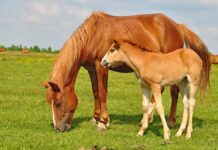As winter approaches, many homeowners turn to multi-fuel stoves for efficient and cost-effective heating. However, not all fuels are created equal. Burning the wrong materials can lead to dangerous consequences, from chimney fires and toxic fumes to legal penalties. Here’s a comprehensive guide to what you can and can’t burn, ensuring both safety and compliance.
Зміст
Understanding the Risks
Burning inappropriate materials in a multi-fuel stove poses significant risks. These include:
- Chimney Fires: Improper fuels can create excessive creosote buildup, increasing the risk of a dangerous chimney fire.
- Toxic Fumes: Many materials release harmful chemicals when burned, potentially poisoning your family and pets.
- Legal Penalties: Burning prohibited fuels can result in fines of up to £1,000.
What You Can Burn
Multi-fuel stoves offer flexibility beyond traditional wood. Acceptable fuels include:
- Wood Logs: Seasoned hardwood is a classic and efficient choice.
- Briquettes: Compressed wood or coal briquettes provide consistent heat output.
- Smokeless Coal: Approved smokeless fuels meet emissions standards and are legal in smoke control areas.
- Manufactured Logs: Logs made from waste wood or coffee grounds offer a sustainable alternative.
The 5 Things You Should Never Burn
- Paper: While tempting, burning paper—especially colored or glossy varieties—releases harmful chemicals and creates excessive soot. Stick to minimal amounts of plain newspaper only if necessary.
- Pallets: Many pallets are treated with methyl bromide, a highly toxic substance that releases dangerous fumes when burned. Even untreated pallets are often too dry and burn too quickly.
- Wet Wood: Burning wet wood produces excessive smoke, increases creosote buildup, and reduces heating efficiency. Always use properly seasoned wood with a moisture content below 20%.
- House Coal: Illegal to sell for domestic use since 2023 due to high pollution levels. Smokeless coal is the only approved coal alternative.
- Treated, Painted, or Varnished Wood: Any wood coated with chemicals—including furniture, MDF, or laminate—releases toxic fumes when burned.
Staying Safe and Compliant
- Moisture Control: Always use dry, seasoned wood. A moisture meter can ensure optimal burning conditions.
- Fuel Certification: Look for the “Ready to Burn” logo on wood and briquettes to guarantee quality and dryness.
- Legal Compliance: Ensure your fuel choice complies with local regulations, especially in smoke control areas.
The Bottom Line
A multi-fuel stove is a valuable heating asset when used correctly. By understanding what to burn—and what to avoid—you can ensure a safe, efficient, and legally compliant winter heating experience





























